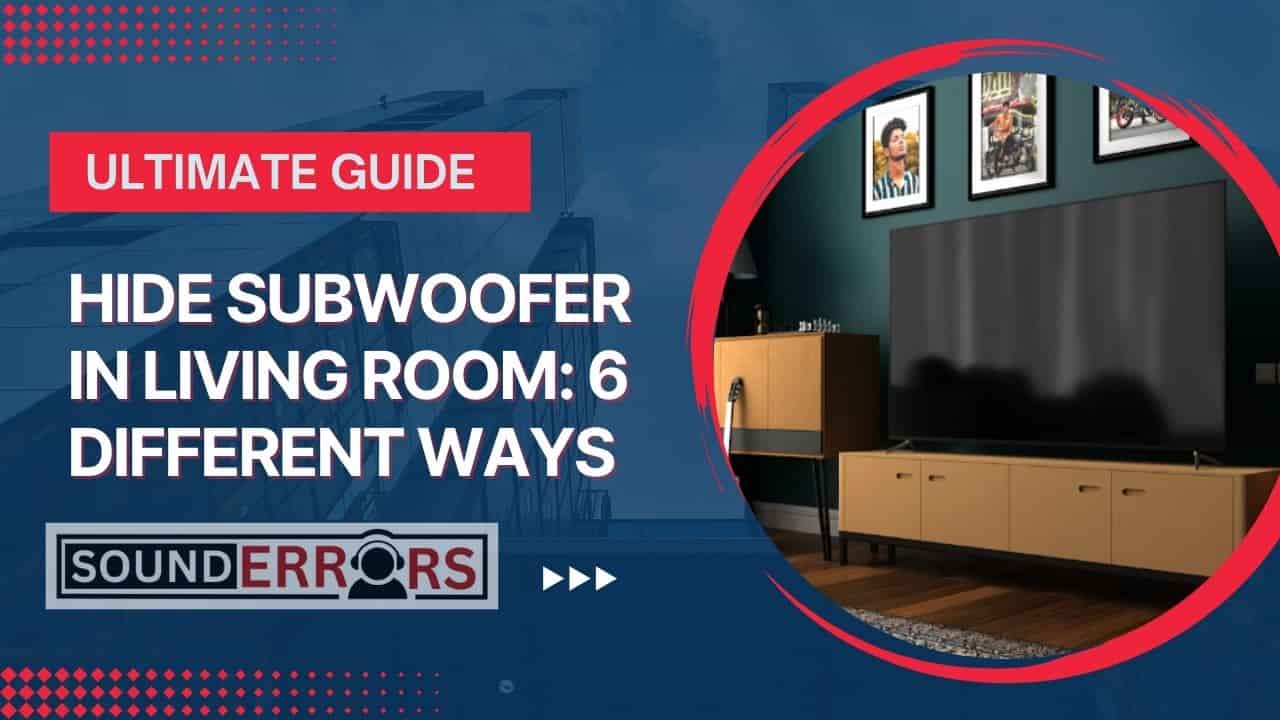This Post may contain affiliate links, when you purchase through links on our site, we may earn an affiliate commission at no extra cost to you. Here’s how it works.
Subwoofers are crucial for deep bass in a home theater or audio setup. Subwoofers are often large, and bulky, making them difficult to integrate into your living room’s aesthetic.
Table of Contents
ToggleFortunately, there are several creative ways to hide subwoofer while maintaining sound quality.
How to Hide subwoofer in Living room?
Here are a few approaches you can consider for hiding your subwoofer in a living room:
1. Behind Furniture:
One of the simplest and most effective ways to hide a subwoofer is to place it behind furniture that can act as a natural barrier.
- Behind a Sofa or Sectional: Many people place their subwoofer behind their sofa or sectional.
- In a Corner Behind Furniture: Placing the subwoofer in a corner behind a chair or table can also help reinforce the bass, as corners often amplify low-end frequencies.
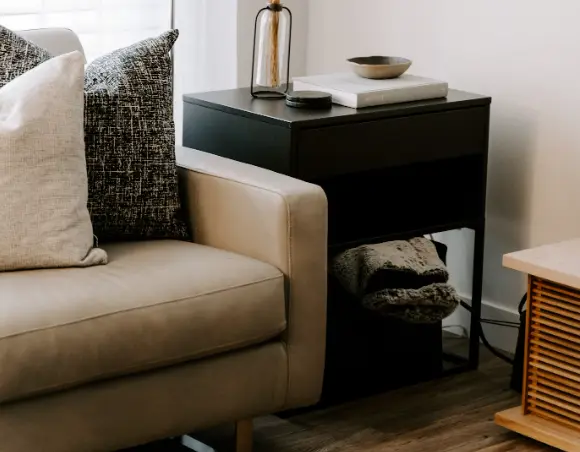
Pros:
- Quick and easy solution.
- No need for additional furniture.
- Helps with bass reinforcement (especially in corners).
Cons:
- Furniture must be placed strategically to prevent sound obstruction.
- Limited airflow might affect sound quality.
2. In a Cabinet or Media Console:
As mentioned earlier, placing a subwoofer inside a cabinet or media console is another common solution.
- Open Cabinet Design: Opt for a cabinet with open or slatted sides, or one that has ventilation holes. A fully enclosed cabinet may muffle the subwoofer’s output, so it’s important to allow air to flow freely.
- Custom Cabinetry: Build a custom media console with a designated spot for your subwoofer.
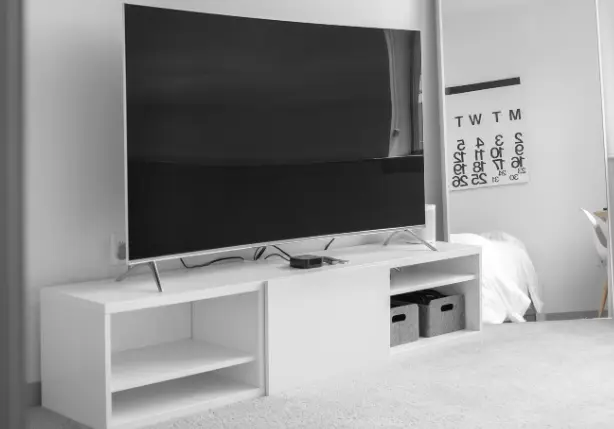
Pros:
- Keeps the subwoofer out of sight, preserving room aesthetics.
- Can also hide other audio equipment, creating a clean, tidy look.
- Can reduce clutter in the living room.
Cons:
- Need to consider ventilation and sound reflection.
- A fully enclosed cabinet can distort the bass.
3. In-Wall or In-Ceiling Installation:
For a more permanent and high-end solution, consider in-wall or in-ceiling subwoofers.
- In-Wall Subwoofers: In-wall subwoofers are built into the structure of the wall itself, requiring some construction work. They can be mounted behind drywall.
- In-Ceiling Subwoofers: Similar to in-wall units, in-ceiling subwoofers are installed above you, hidden in the ceiling.
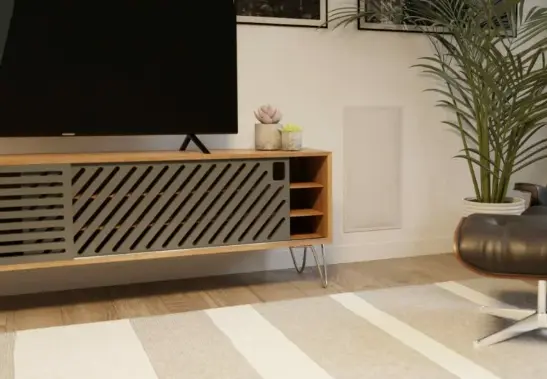
Pros:
- No visible subwoofer.
- Excellent sound quality, if installation is done correctly.
- Whole-home audio system clean and modern look.
Cons:
- Expensive, both equipment and installation.
- Permanent modification of the space required.
- May not be the best choice for renters.
4. Hidden in a Decorative Furniture Piece:
If you like a more aesthetically integrated solution, there is furniture designed specifically to conceal subwoofers.
- Ottomans or Coffee Tables: Some ottomans or coffee tables are designed with a hollow interior where a subwoofer can be hidden.
- Shelves with Removable Panels: You can also find decorative shelves with removable or slatted panels that allow the subwoofer to remain hidden.
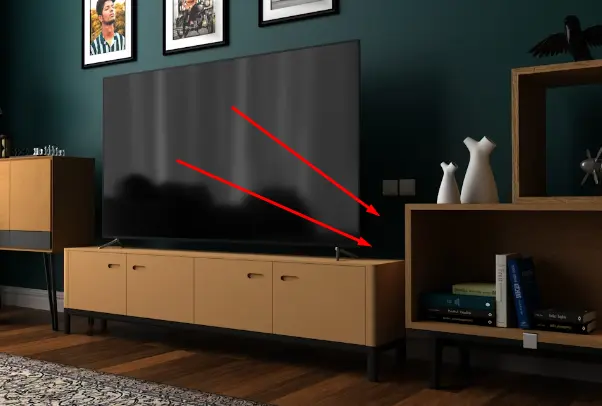
Pros:
- Furniture piece serves as storage or a decorative element.
- The subwoofer is hidden without detracting from the room’s style.
- Can work well in rooms where additional storage is needed.
Cons:
- Ensure the furniture piece is designed to the subwoofer’s size and sound output.
- Might be slightly more expensive compared to regular furniture.
5. Under the Furniture:
Hiding your subwoofer under the furniture is another great option. This method works particularly well with larger furniture pieces that have enough clearance underneath.
- Under a Sofa or Sectional: Many sofas and sectionals have large spaces under them, which can be ideal for placing a subwoofer.
- With Isolation Pads or Feet: Placing the subwoofer on isolation pads or rubber feet can prevent unwanted vibrations from traveling through the furniture and the floor, improving the sound quality.
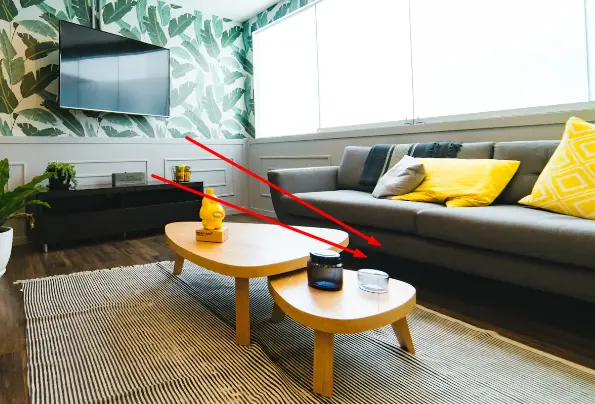
Pros:
- Completely hides the subwoofer from view.
- No need to add extra furniture to the space.
- Easy to implement with existing furniture.
Cons:
- Limited by the size of the available space under the furniture.
- Could muffle if the subwoofer is placed too close to the floor
6. Using Acoustic Panels or Covers:
If you’re looking to disguise the subwoofer more stylishly, decorative acoustic panels or fabric covers are a good solution.
- Acoustic Fabric Panels: These are panels made from acoustically transparent fabric that can be mounted on the wall or suspended in front of the subwoofer.
- Custom Covers: You can have a fabric cover made that fits over your subwoofer. Breathable material allows sound to pass through but hides the subwoofer’s bulky design.
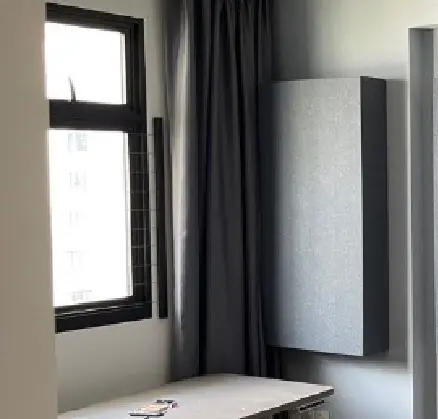
Pros:
- Customizable to suit the room’s decor.
- Can add a stylish, artistic touch to the room.
Cons:
- Must ensure the material is acoustically transparent to avoid affecting sound quality.
Can Hide the Subwoofer Downgrade Sound Quality?
While it’s possible to hide your subwoofer, doing so can affect sound quality in certain situations. When hidden, the bass response may change due to the limitations of the hiding space. Here are a few things to consider:
1. Space Constraints and Sound Waves: Subwoofers produce low-frequency sound waves that have long wavelengths. If the subwoofer is placed in a tight, enclosed space, these sound waves may not be able to expand properly, causing a loss of clarity and power in the bass.
2. Bass Reflection and Standing Waves: These are specific frequencies where sound waves bounce off walls, ceilings, or other surfaces, reinforcing certain frequencies while canceling others. When subwoofers are hidden in enclosed spaces, such as a cabinet, they can exacerbate these effects, leading to uneven bass reproduction.
3. Directivity and Port Placement: Subwoofers with ports require specific placement for optimal sound. Hiding the subwoofer in a cabinet may restrict the ability of the ports to properly radiate sound. If you place the subwoofer in a corner or behind furniture, the sound may become boomy and uneven due to reflections from the walls or surrounding furniture.
Can you hide a subwoofer in a cabinet?
Yes, you can hide a subwoofer in a cabinet, but there are important considerations to keep in mind to ensure that the sound quality isn’t compromised.
When selecting a cabinet to hide your subwoofer, make sure it is large enough to allow the subwoofer to sit comfortably inside without obstructing airflow.
The cabinet should ideally have some ventilation or open spaces, especially if the subwoofer has ports or needs room for its vibrations to move freely.
Conclusion:
Having a subwoofer in your living room is possible through several creative methods, each offering different benefits and challenges. Whether you choose to place it behind furniture, in a custom cabinet, or even integrate it into the walls or ceiling, the key is to balance aesthetics with sound quality. For the best sound, it’s essential to ensure airflow, avoid tight spaces, and be mindful of potential sound reflections.
